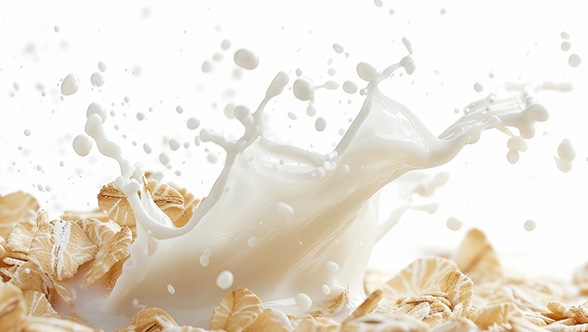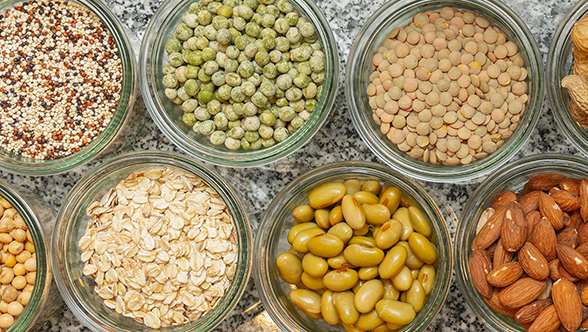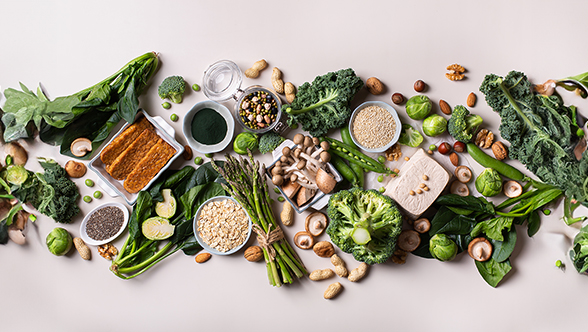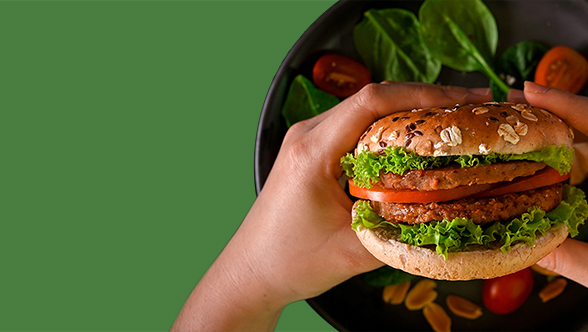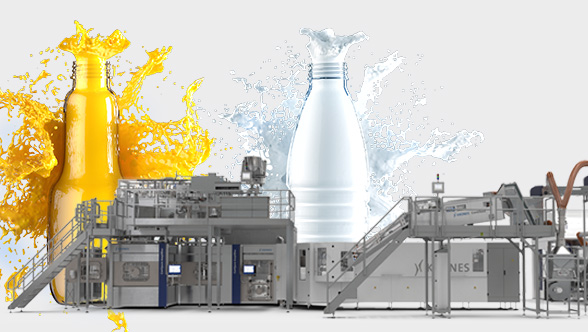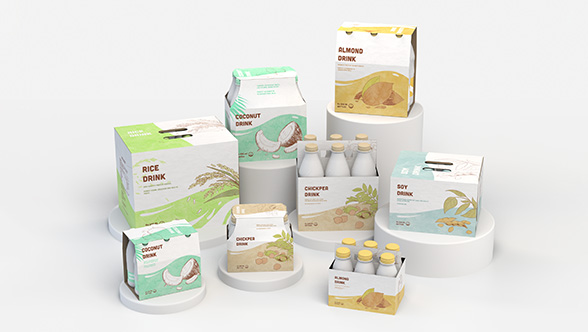Globally, 57 percent of dietary protein – the majority, in other words – is derived from plants, followed by animal sources. These account for 43 percent in total and comprise meat (18 percent), dairy products (ten percent), shellfish (six percent) and other animal products (the remaining nine percent). In Europe, however, most dietary protein comes from animal sources, namely between 55 and 60 percent. Around 35 percent is derived from plants. This protein balance has a considerable environmental impact, because livestock production is associated with significant greenhouse gas emissions. These are emissions that could be saved if more alternative rather than animal protein sources were used for nutrition – not only in Europe, but worldwide. In 2020 only about two percent of proteins consumed came from alternative sources. While the exact contribution from algae, insects, microbially fermented products and cultured meat is unknown for comparison, it is estimated to be a small fraction of this total. The question therefore arises of how this potential can be expanded further in Europe.
What will our diet look like in the future? How can we provide the ever-growing population of the world with valuable nutrients on a sustainable basis? In a study commissioned by the European Parliament, researchers analysed algae, insects, proteins produced through fermentation and cultured meat for their sustainability, revealing the associated energy demand and assessing the corresponding economic and social potential. We have summarised the results for you.
Disclaimer: Scientific basis
The information in this article was taken from a study entitled “Alternative protein sources for food and feed” that was commissioned by the European Parliament. Produced in April 2024, the study sets out the current state of research into alternative proteins and examines the prospects that algae, insects, microbial fermentation and cultured meat have as a future source of protein. It was authored by Elta Smith, Julien Etienne and Francesco Montanari. Their findings are based on literature, from which they selected current and well-founded estimates to use as a basis for their forecasts.
The full study (in English) can be found here.
Alternative protein sources on the test bench
Food goes on an energy-intensive journey before it reaches the plate. This doesn’t just apply for meat, though: alternative proteins present a challenge too. And it is important not to be under any illusion that “alternative” always also means “sustainable”. In some cases, in fact, the energy consumption here can be even higher than for traditional sources, because it currently requires more energy-intensive production methods and the processing steps may entail greater consumption. This depends, among other things, on the production method, local conditions or even the use of energy-saving technologies. It is with the latter especially that the Krones Group comes into play: Steinecker’s bioreactor, for instance, is already improving the energy efficiency of biomass fermentation compared with mixer-drum reactors. That is because a circulating unit can be used instead of an agitator, reducing the amount of energy consumed. In addition, taking a holistic view of the line and the use of innovative technologies allows better use of the energy and heat flows and hence cuts down on primary raw materials.
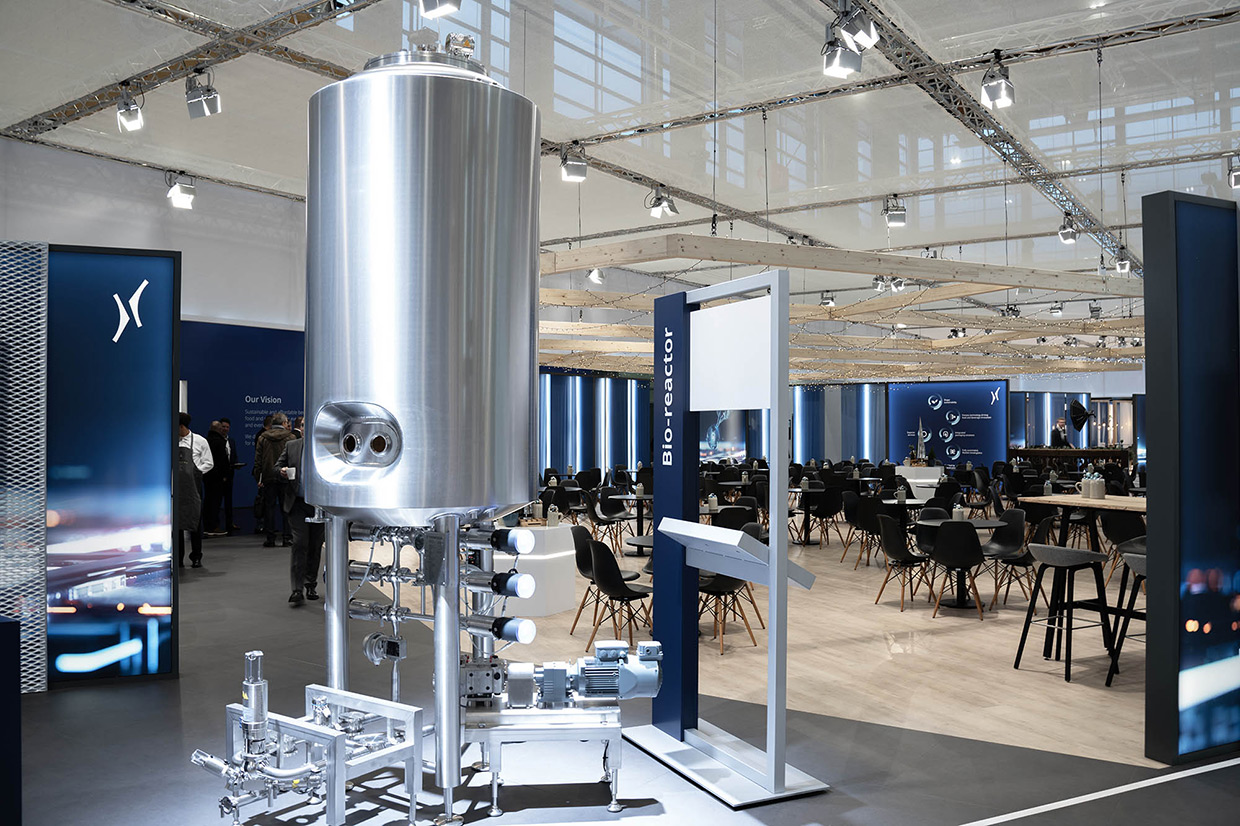
Other factors also play a role alongside energy consumption in the sustainable evaluation of alternative proteins. These include the upstream supply chain, for instance. Let's take a look at conventional livestock production first. Vast quantities of feed are needed for animals kept as stock – and this of course has to be grown. Many forests – particularly in South America – are being cleared to this end, resulting in monoculturally-centred agriculture. Even alternative proteins, though, cannot be produced without supplementary raw materials: Additional resources for the nutrient solution are required for the breeding of insects or cultured meat or for microbial fermentation, for instance. Such production in turn requires agricultural land. Even so, the amount of land used for the process of producing alternative proteins is often less than for conventional proteins. Insect-based foods, for instance, could require up to 92 percent less land than cattle or poultry.
If these findings are transferred to total greenhouse gas emissions, it can be seen that such emissions can be reduced by converting our diet. According to some estimates, after considering the relevant emissions the production of cultured meat could have a significantly lower carbon footprint – by more than 75 per cent – than beef.
Insect snack? – Yes please!
As well as the potential for conserving resources, one of the frequently mentioned advantages of alternative protein sources is their good nutritional and physiological profile. With their high nutrient content, after all, alternative proteins sound like a healthy option for our future diet. Despite their high protein or vitamin content, however, many people – particularly in European cultures – seem to have difficulty with the idea of eating insects, as a glance at the current debate around the approval of worms, crickets and grasshoppers as food demonstrates. A look at Asia, though, shows that insects are a traditional part of the food culture there. It is thus more a question of custom whether or not insects are accepted as a source of protein.
An alternative protein source that has, on the other hand, long been on the menu in Europe is algae, as demonstrated, for instance, by the nori leaves that are used in the preparation of sushi. Even microalgae such as Spirulina are now widespread. Found as dietary supplements in green smoothies, for instance, they have a high calcium content and could also be used in the future as a natural source of calcium in milk drinks. The mycoproteins generated through the fermentation of fungi likewise have many benefits, being rich in fibre and protein and promoting intestinal flora.
It is clear that alternative proteins offer some opportunities for our future diet – but how can they be integrated into food in the first place? It is precisely this question that the experts in all three product development centres of the Krones Group are grappling with at the moment. A variety of recipes are being tried out there on a small scale in order to establish how the product behaves in the system and what effect it has on taste.
Research and development in focus
The strengths of alternative proteins are not going unnoticed, which is why investment in research and development for alternative protein sources in the EU has already increased. In addition to research goals, the money is also being used for the purposes of commercialisation in cellular agriculture, including microbial fermentation and cultured meat. Another project of the European Commission is the EU Algae Initiative, which aims to increase the sustainable production and use of algae in Europe. The funding given to the European algae industry is intended to create new jobs, support marine biodiversity and offer a sustainable source of income for coastal populations.
Krones, too, is working on a number of projects for processing alternative proteins:
With its technologies and solutions, Krones plays a critical role in the development and implementation of these innovative technologies and thereby contributes actively to solving global food problems.
- Precision and biomass fermentation: Krones is utilising the expertise it has gained from brewing technology to develop innovative solutions for the production of alternative proteins. One such example is the precision and biomass fermentation in the bioreactor from Steinecker, which allows high-grade proteins to be obtained from microalgae, fungi or other microorganisms.
- Collaborations: Krones has entered into collaboration with the Swiss start-up Food Brewer aimed at producing food and food ingredients on a cell culture basis through fermentation.
- Scaling and efficiency: Krones supports food producers in scaling up their production output and designing a complete system that is cost-efficient.
While the study highlights only the situation in Europe, it is clear that the whole world is facing huge challenges and opportunities when it comes to the generation and processing of proteins. The integration of alternative proteins such as algae, insects, microbially fermented products and cultured meat can make a major contribution to food security and the conservation of resources. Targeted investment in research and development and political support can enable the alternative protein sources mentioned above to be refined and their acceptance increased. This could not only contribute towards achieving the EU’s goals for a more sustainable and more resilient protein supply, but also strengthen global food security.




